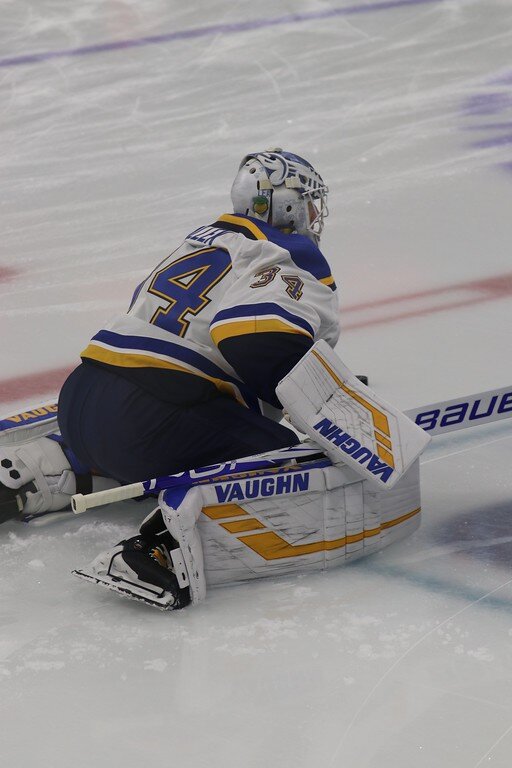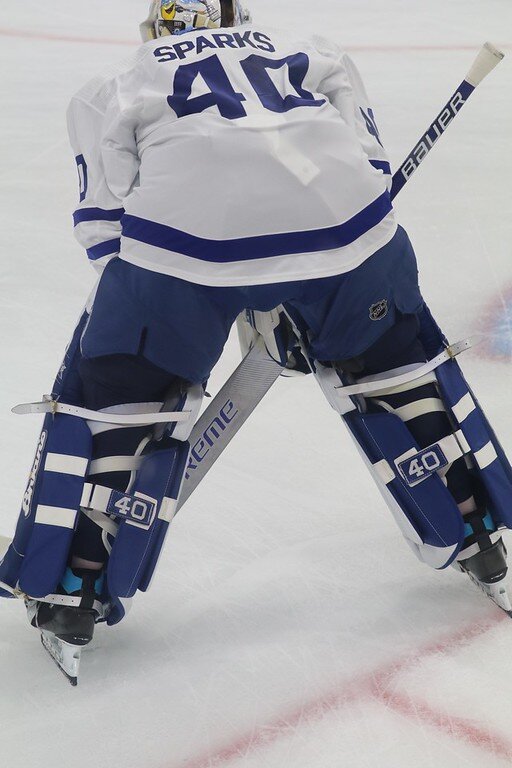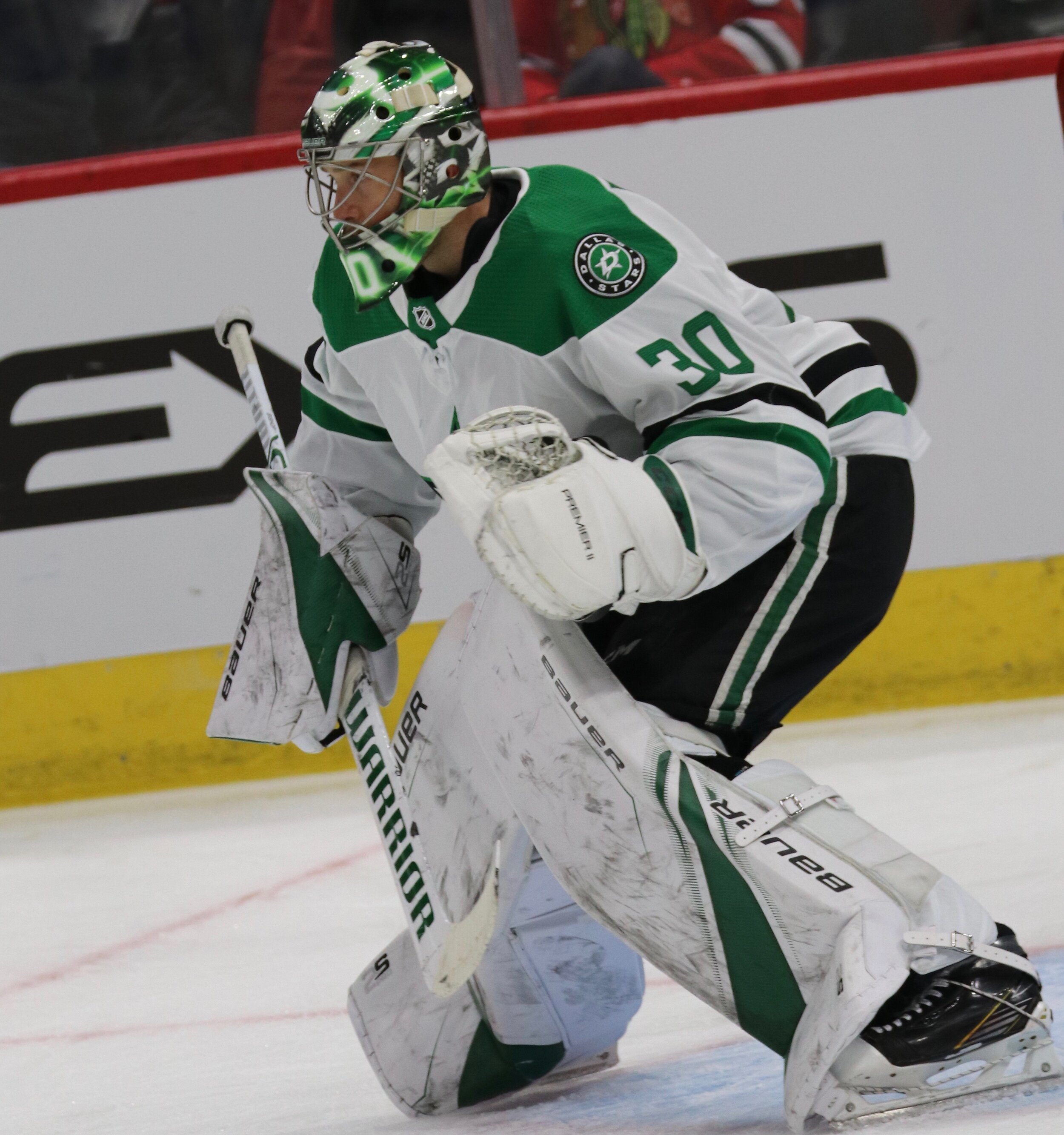Gear Spec 101
Goalie wear the most equipment of any athlete in any sport. And our gear is as critical to doing our job as it is to protect us. Due to the amount of equipment we wear and its importance to our play, understanding how the various “specs” on our gear work is an important part of being a goalie.
Bauer’s Limiting Distance Gauge
Photographer: Don Carlson
NHL Leg Pads - LDS
A frequent question we receive is “what size pad does [insert NHL goalie name] wear?” In reality many pros wear non-retail sizes, the overall height of which is dictated by their Limiting Distance Size or LDS. The LDS is a pad height calculated for each NHL calculated by the following measurements:
· Distance from the Floor to the Center of the Knee
· (+) 45% of the Distance from The Knee to the Pelvis
· (+) a “four inch (4”) allowance for the height of the skate”
This calculation creates a ceiling of how tall the goalie’s pad can be. Compliance with the LDS is determined by putting the pads themselves in the Limiting Distance Gauge (pictured below). Goalie gear makers are required to submit pads to Kay Whitmore’s office to obtain approval that the pads meet LDS compliance (along with the other leg pads rules set out in section 11.2 of the NHL’s rulebook). The pads that pass are marked with the date, the max LDS (so they can be rechecked later if necessary) and Kay Whitmore initials. Those pads that fail are sent back to the gear company for remediation. The equipment company has the option of sending a picture of the pad in their Limiting Measurement Gauge showing the pad within the LDS requirement, at which time Whitmore’s office then send back an approval (allowing the gear company to send the pads directly back to the goalie without having to go back to the NHL offices once again). NHL goalies will have their equipment periodically checked by league officials to confirm that only approved gear is being worn and it has not subsequently been altered.
Elastic vs. Lace Toes
How goalies attach the fronts of their pads to their skates has changed a lot in recent history. Only 15 years ago, many goalies will still tying down their toe laces as tight as possible - hell David Aebischer, Martin Brodeur and Nikolai Khabibulin were all still using leather toe straps! However over the past decade many goalies have shifted to toe laces and, even more recently, elastic toe ties.
But what’s the difference between the latter two and which do we recommend?
To answer that, it’s important to first know the performance factors you want from your toe ties. The answers are 1) responsiveness (i.e. for the movements of your foot to translate directly into movements of the pads) and 2) minimal tension on the ankle and hip. The problem with traditional lace toe ties (with or without slack) is that they can only satisfy #1 or #2, not both. Tight lace ties will give you responsiveness but won’t allow the skate to drop fully to the ice which can cause stress on both the ankle and face of the pad, creating lack of seal along the thigh rise area (dreaded “V” affect when in the butterfly). Lots of lace slack will relieve that stress but diminishes the responsiveness of the pad due to reduce connection.
As a result, over the past several years elastic toe ties have come onto the scene in a big way. Elastic toe ties satisfy both #1 and #2 – they create great responsiveness with minimal tension on the ankle and pad. NHL goalies tend to be slow adopters to new technology, but already 14% of them have made the switch to elastic toe ties and all the major brands have now made elastic their stock toe setup. All the major gear companies sell the ties separately (which fit almost all pads) and there a number of 3rdparty companies that sell their own versions (e.g. Kova, Pro Laces). If you haven’t tried them yet, definitely check them out.
Photographer: Don Carlson
Photographer: Aaron DuRose
Boot Straps: Heel vs. Lundy vs. None
A very common trend over the past 5+ years is goalies modifying how they wear their boot straps or even abandoning them entirely. Whereas 6 years ago goalies like Miikka Kiprusoff were wearing two boot straps through his skate cowling, last season only 35% of NHL goalies were using a boot strap under their skate (no one used two straps). Another 40% were wearing it “Lundy” style behind their heel while the remaining 25% didn’t wear any bootstraps at all. This follows the dual trends toward fewer straps and less tension. But what are the advantages of the newer trends?
The “Lundy”option of running a boot strap through a back loop near the Achilles heal began with Henrik Lundqvist, when he started wearing his strap like this at the beginning of the ’08-’09 season. This setup, which requires a little tension to be effective, makes the pad sit higher on the leg, and due to the low positioning helps with responsiveness near the bottom of the pad. Fortunately for modern goalies, this way of strapping has become so popular that a nylon loop at the heel is now standard all goalie skates.
Carey Price started the ’13-’14 season not wearing any boot strap. And after Price started, many followed (including ¼ of NHL goalies last year). Given how loose many goalies were wearing it, it made sense. Not wearing the strap allows the pad to travel up the leg when dropping, helping with 5 hole closure. But it’s important to note that dropping the strap entirely can cause TOO much rotation in the pad. Due to this trend most of the equipment makers have defaulted to not including boot straps or making them easily removable.
Knee Elastic Positioning
Over the past 5 years, more and more goalies have been dropping their knee cradle elastic down toward the calf. In fact, over 1/3rd of NHLers last year wore their calf straps like this.
But why? Knee cradles were put into leg pads well before the era in which goalies wanted them to rotate; rather the intent was to have the knee “cradled” into the pad. Thus the designs looked to comfortably hold the knee into place and allow the goalie’s leg movements to translate directly into the pad. But as the butterfly technique came into prominence, goalies started wanting their pads to rotate in order to present as much of the pad face as possible even when on their knees. In order to get the desired rotation, goalies started to wear their pads more loosely and began removing straps from the outer lateral section of the pad.
The thinking behind the removal/repositioning of the straps is the fact that they come into contact with the leg as the knee attempts to rotate in the pad, thereby slowing down the overall pad drop velocity. The less contact with the leg, the less restriction when dropping. In fact, dropping the elastic toward the calf has been shown by Ryan Frayne PhD to increase the velocity goalies can bring their pads to the ice, and that research has been used to inform the designs on CCM’s pads. So if you haven’t tried moving your elastic, definitely give it a try and see if you feel you’re able to seal your 5-hole faster
Note the complete lack of straps on the outside of the knee.
Photographer: Don Carlson
High calf tension and little boot tension or Lundy strapping are the keys to pads sit higher on the leg.
Photographer: Don Carlson
How to make pads sit higher?
A very common question we receive from goalies is “How can I make my pads sit taller on my leg?” Lifting the pad higher on the leg helps with 5 hole closure and butterfly slides by keeping the pad’s inner boot section further from the ice.
Over the past few years many companies have added features to their pads to allow this to happen (e.g. Bauer CRS, CCM Quick Motion, Vaughn RRC, etc) but there are other ways to help pads sit taller. The key is to put the main tension point of the pad at the top of the calf. This can be done by angling and tightening the calf elastic downward and/or placing a strap with decent tension at that point (e.g. a “Professor Strap”).
Just as importantly, lots of slack at the toe and boot along with very light tension at the middle and lower calf straps are critical to allowing the pad to sit taller. See pics of Makenzie Blackwood during his CHL and early minor league days for reference.
Pad Flex, Curvature & Eternal Breaks
Pad flex and breaks are something very misunderstood by many goalies. Beginning with the latter, pad flex is an evaluation of how pliable the pads are and how much the movement of the goalie will translate through the pad. What is most important to understand is that goalies should not think of their preferences on broad terms like “I prefer a soft pad” or “I prefer a stiff pad” but rather “I like lots of flex in my pad in XXXX area and more stiffness in YYYY section.” So for example, many goalies prefer a softer boot as it allows skate movements to more easily translate through the pad and the goalie can place their weight in front of the toes without the ankle stiffness of the pad resisting the flexion. This trend has been seen through the equipment industry as companies continue to offer pads with softer and softer boots. In contrast, many prefer more stiffness toward the upper portion of the pad as this is an area designed more as a blocking surface. Flexion in the upper thighrise could result in pucks squeaking through, which is why many opt for stiffer foams in this area.
Moving to pad curvature, while flex and curve are related on a practical level, they are independent and should be thought of as such. While a stiffer pad hold its shape better than a softer pad, pad curvature should be aligned to the goalie’s butterfly width. Goalies with narrow butterflies will need more pad curvature to help close the 5 hole versus a goalies with a wider butterfly who has the hip flexibility to rotate the straight upper portions of the pad together. A general rule is that, as a goalie ages, more pad curvature will become necessary as flexibility naturally decreases. And importantly, while additional curvature can be added to the core within leg pad, it CANNOT be removed. This is why we recommend adding curve by storing pads upside down and NOT dramatically affecting the pad curve by placing the pads under a table or tying them.
Like flex to pad curvature, external breaks are related but independent parts of pad design. Breaks in the outer roll in the pad will add some flex to the pad (which can allow the pad to curve more) but not as much as internal breaks within a pad. Said another way, the flex differences between a pad with no external break and one with 1 external break are not profound. This is another reason why many companies have started moving away from putting breaks in pad outer rolls (e.g. Bauer).
Photographer: Don Carlson
Photographer: Don Carlson
CCM EFlex 4s still feature prominent knee and outer rolls.
Photographer: Aaron DuRose
Knee & Outer Rolls
Both outer and knee rolls were critical in the early days of leg pad construction when pads were stuffed and resembled cricket leg guards. The lateral outer roll helped maintain the overall height of the pad while the knee rolls supported the width. Many gear companies now offer flat-faced pads without knee rolls, which today serve no functional purposes and are purely aesthetic. Outer rolls provide a little extra rigidity to the pad (if solid) and keep pucks from skipping up and over. But we expect, like knee rolls, outer rolls will continue to shrink in size and ultimately disappear (FactoryMAD has already removed it on some of its pads).
Double T vs. Single
One of the most prevailing trends in goalie gloves has been the ability to choose between single and double T pockets. The former had been the standard for years and has a more rigid spine allowing for more “snap” when catching the puck. The latter creates a larger internal pocket when closed, increases puck retention by giving the laces a larger surface area and allows the goalie to look though the pocket when catching pucks in front of their face or freezing it on the ice. By our tracking, over 70% of NHL goalies were using the double T last season.
Nylon lace vs. Skate
Similar to the adoption of Double Ts (though not as widespread), many goalies over the past 10 years have started using skate lace in the pockets of their trappers versus nylon cord. Last season 25% of NHL goalies used skate lace in their pockets, in whole or in part. In contrast to nylon cord (which does not have any give), skate lace slows down the puck more gradually as it stretches. In our experience, and contrary to myth, skate lace does not break down faster or break more often than nylon. Skate lace is however more difficult to lace in due to the flattened edges, but is more readily available in a wide array of colors. We recommend non-waxed as it allows the laces to stretch more (though they will discolor more rapidly than waxed equivalents). Critical: when re-lacing pockets always get the longest possible length.













